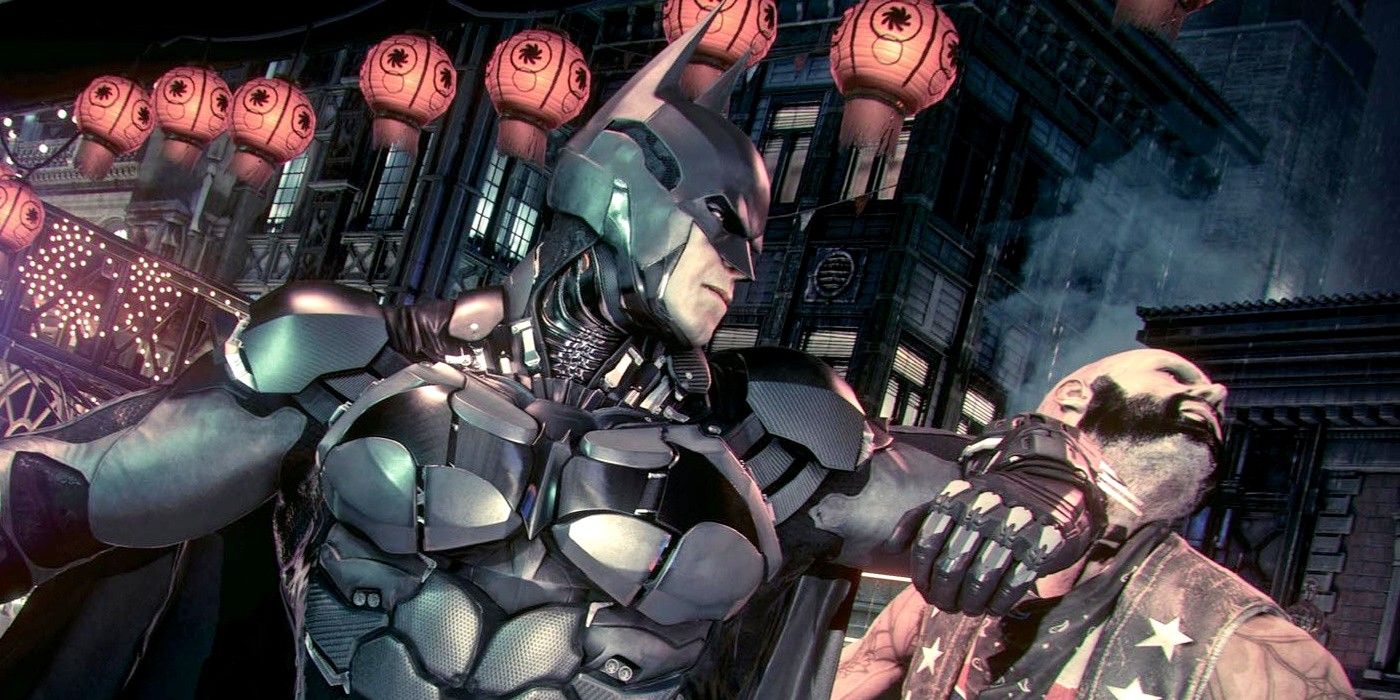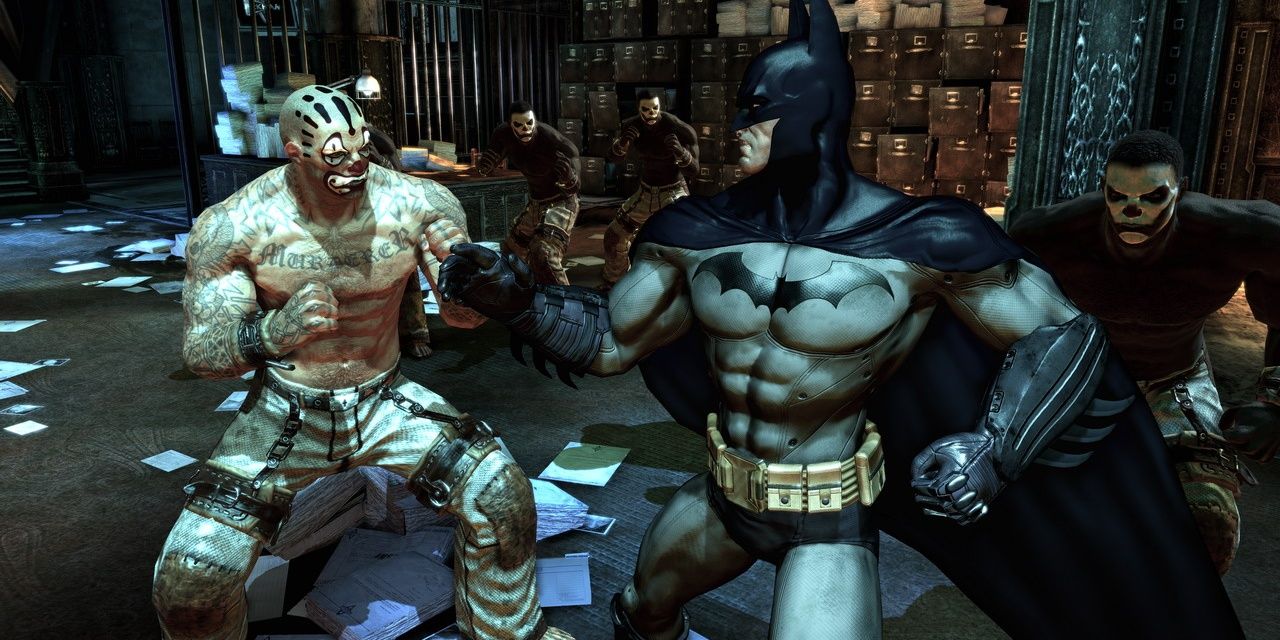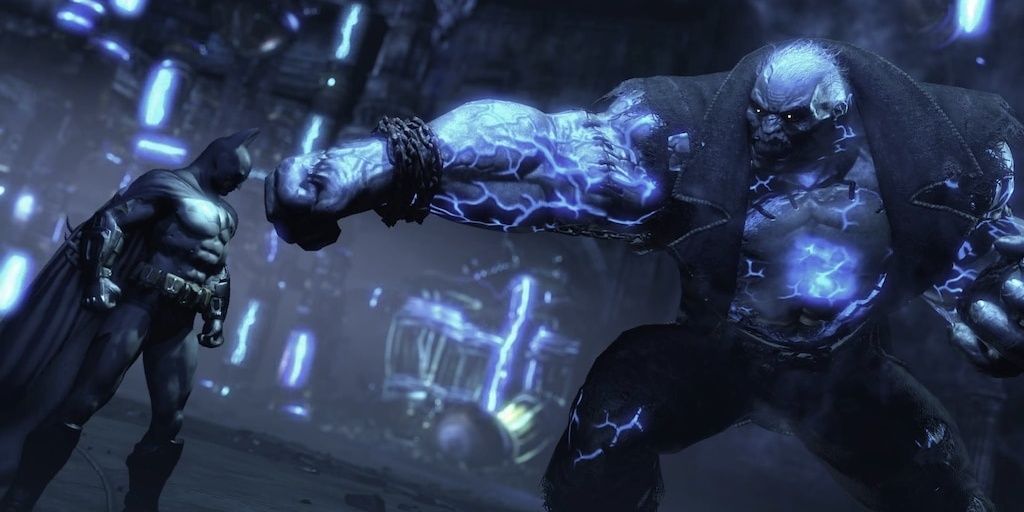Batman may claim to not kill in the Batman: Arkham games, but there are multiple points where the people he's fighting should be dead. For as action-packed as the Arkham games are, the story constantly reasserts that Batman will never kill. This guiding philosophy is a major plot point throughout the series, Arkham City in particular.
However, anyone with even a cursory knowledge of the human body and how physical trauma affects it will be able to spot some holes in the games' logic. The things that Batman does to the average goon borders on the inhumane at points, leaving players shocked at the idea that the goons left behind after a fight aren't dead or dying. The Arkham games have a bad habit of poorly representing the characters they're adapting - Harley Quinn's unfortunate Batman: Arkham redesign, for instance - but one would think the main character would be exempt from this.
Batman goes to great lengths in every form of media he appears in to ensure that his opponents don't perish as a result of them coming to blows. But as the games continued upping the ante to create ever-greater spectacle, it became more and more ludicrous to believe that everyone Batman fights somehow came out of it alive and well. However, that doesn't mean that the earlier titles are guilt-free in this regard, either.
Arkham Asylum Had Batman Blowing Up Crooks With Explosive Gel
For the most part, Batman: Arkham Asylum is the least egregious offender of the four games in the Arkham series. Batman's combat is brutal, but methodical. Even with the more terrifying villains like Batman: Arkham's creepy Scarecrow with his deadly nightmares, it's visibly clear that Batman isn't trying to break his foes permanently. However, the game then proceeds to introduce explosive gel.
Explosive gel is originally introduced as a means of getting through damaged or thin walls in order to progress or find those elusive Riddler trophies. However, the game also allows the player to use the gel as a weapon during combat and stealth. Placing the gel can allow Batman to knock down an enemy from afar without risking getting caught by sneaking up behind them. While setting off an explosive in a man's face at point blank range is cause for worry, the fact that this gel can only leave scorch marks on even slightly sturdy walls suggests that it isn't the strongest thing in the world, backed up by the fact that the gel can't incapacitate enemies on its own. Thus preventing Arkham Asylum from recreating Die Hard.
Arkham City's Interrogation Scenes Are Potentially Fatal
Batman: Arkham City is where the series began inching a little too close for comfort to Batman being too brutal in his methods. The takedowns were harsher, with Bats breaking bones and ramming people's heads into walls. The combat was more intense, with one fight requiring Batman to hijack a Venom infused monster goon and use his superpowered body to fling scores of men across the room.
Most notable here are the interrogation scenes. The Riddler, in an attempt to keep an eye on all the major players in Arkham City, has informants scattered all over the place, which Batman can then interrogate to find more Riddler secrets. The game, rather than having you find these secrets through Batman's brilliant detective skills, instead has Batman brutally interrogate the goons for their secrets. After which, he either knocks them out with a well placed punch or, if you have Batman interrogating the goon next to a ledge, he drops them off the side to hang there by their ankles. At least one of the men Batman has done this to has to be dead from the blood rushing to their head.
Arkham Knight Is Batman At His Most Brutal
Of the three games in the main Arkham trilogy, the most egregious example of Batman's methods in these games being too strongarm is Arkham Knight. Even barring the infamous scene where Batman interrogates a goon by nearly crushing him under the spinning tires of Arkham Knight's tank mode, the game has Batman being pushed further to the brink than ever before. As such, he crosses more moral boundaries as a result.
The Batmobile's inclusion in the game - while something this series was always likely to get around to - is the biggest point on contention with Batman fans when it comes to Batman's methods. The lengths that Arkham Knight goes to in order to try and justify the use of this several ton war machine by a man who has sworn to never take a life is absolutely ludicrous. The Batmobile is equipped with a mounted gun that only fires "nonlethal" rounds. Nonlethal rounds shot from a mounted cannon. If Batman is so careless as to run the Batmobile into a goon in the middle of the street while on his way to one of Arkham Knight's superior side missions, the goon is "nonlethally" knocked back by an automatic projectile launcher that triggers whenever an enemy is in the Batmobile's path while driving. This stands in willful ignorance of the fact that anything launched at a human body hard enough to lift it off the ground and propel it backward is most likely breaking bones and cracking heads. There's also the fact that there's nothing stopping the player from running over the incapacitated goon.
Batman's no-killing rule is so central to his character that it serves as the tragically ironic punchline to the Joker's death in Arkham City. But throughout the timeline and story of the Batman: Arkham games, the gameplay reflects that philosophy less and less. There is simply no accepting, when held up to scrutiny, that everyone Batman takes on in these games gets out alive. There are certainly things a player must forgive in a video game, because no game is going to be made so thoroughly as to rid itself of everything inconsistent with what it's saying. But there is something disturbing about watching Batman's methods for taking down criminals grow darker and more brutal with each passing game. In that sense, it was probably for the best that the Batman: Arkham series ended the way that it did, because if Batman kept going, things would only have escalated further.




